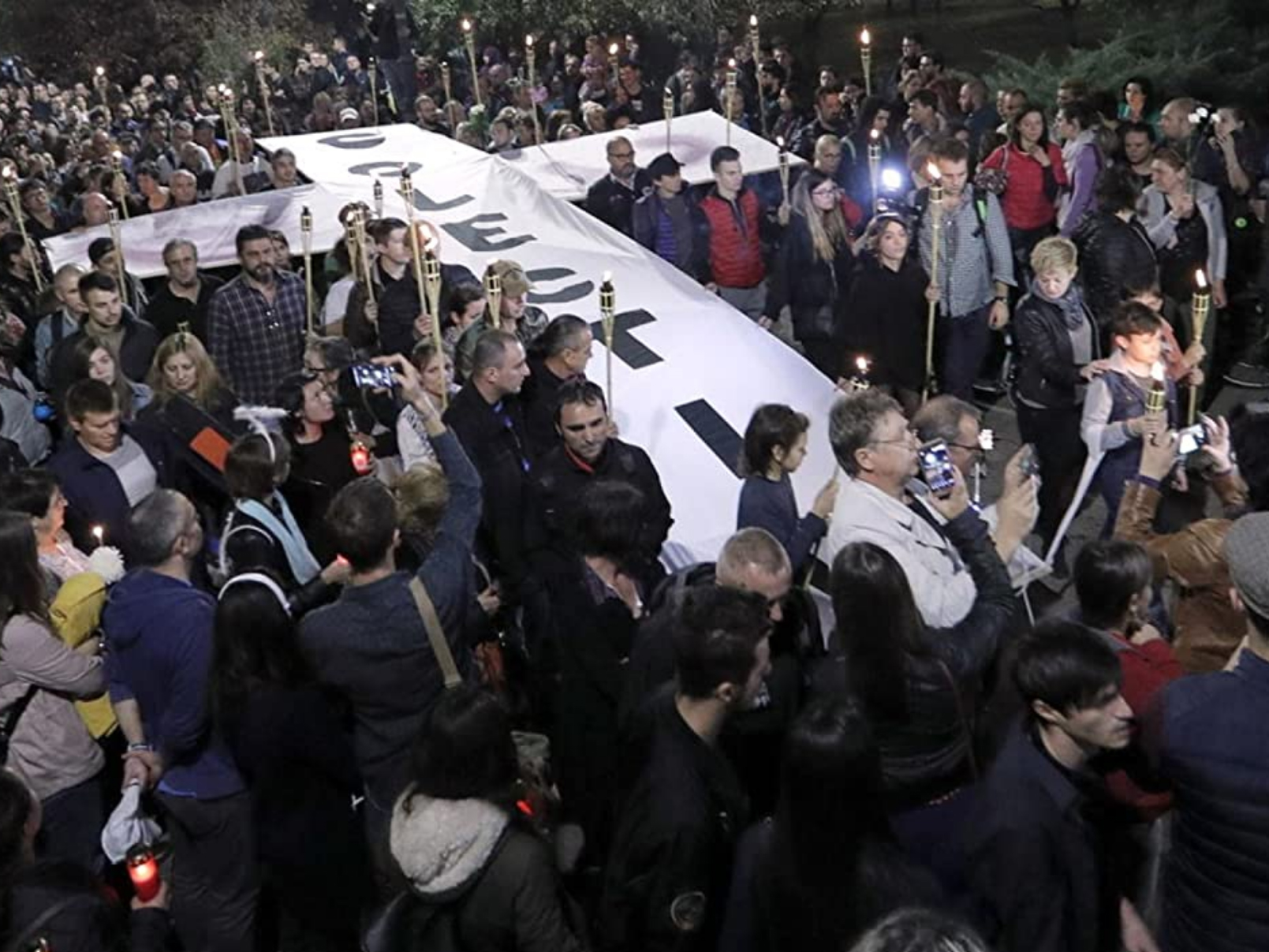
- Film
Docs: Collective (Romania)
Romanian-German filmmaker Alexander Nanau’s Collective (Colectiv in Romanian) is a searing exposé of systemic corruption, government cover-up, institutional injustice, and indifference to suffering – as well as a cautionary tale about the significance of honest, critical, and dispassionate press. World-premiering out of competition at the 2019 Venice Film Festival, the film later screened at the Toronto and Sundance Film Festivals.
Collective bears the unique distinction this year of being nominated in two different categories of the Academy Awards: Best Documentary Feature and Best International Feature. This is the first time a Romanian documentary has been the country’s official submission. The film’s title derives from a catastrophe, a fire at a nightclub named Collectiv in Bucharest. The inferno killed 27 people and injured over 180. Ironically, the tragedy occurred just as the group Goodbye to Gravity was delivering a protest song about the corruption of the government.
It turns out that the “accident” wasn’t simply the result of laxity about inspecting fire exits and building materials. The majority of those who lost their lives died later, not out of their injuries, but as a result of corrupt and malfunctioning hospitals.
Tragedy strikes again some months later when 37 more victims die from infections caused by pyocyanic bacteria. The lack of decent healthcare and negligible government hospitals lead to massive outrage.
In due course, it’s revealed that Romania has the worst record for post-surgical infections in the entire EU. Each year, about 12,000 citizens perish, and social inequality is a major variable. Most of the dead were poor patients who could not afford to be transferred to hospitals in richer Western European countries, such as Germany or Austria.
Enter the “Gazeta Sportului,” a century-old tabloid, which exposes the scandal under the dynamic leadership of its editor Caitalin Tolontan. When he and his team begin investigating the mismanagement, they are told that many patients died of bacterial infections and that hospitals were never “a safe place for burn victims.”
The ensuing probe into the hospitals reaffirms the suspicion that the disinfectants were indeed diluted to about ten percent of what they’re supposed to be.
The paper publishes a story about the corrupt company Hexi Pharma, which falsified the disinfectants, and how the government did nothing to check out this malpractice, failing to protect ordinary civilians from gross injustice. Under various pressures, the health minister orders investigations into the situation, since Hexi Pharma is a prominent company that provides supplies to over 200 hospitals.
When Tolontan goes on TV to discuss the investigation, the Ministry of Health is dismissive of the charges, claiming that they have their own tests which show their products to be 95 percent efficacious.
The journalists find the source that’s been giving the intelligence service briefings since 2008, including evidence that the bacterial infections were killing people. The service knew about the problem but did nothing about it. When the Gazette publishes the story, protests continue over the corruption and cover-up.
The minister resigns and there’s a criminal investigation of the head of Hexi Pharma, Dan Condrea. The government announces at a press conference that testing revealed that the Hexi products are all diluted.
Shortly after, Condrea is killed in a car crash, and there are speculations whether the crash was an accident, a suicide, or a calculated murder. The paper suspects that he was killed because he could have named the government sources that he had bribed.
The feature’s most horrendous moment occurs when Tolontan and his colleagues are shown a secretly shot video of maggots wriggling in a patient’s incompetently treated wound. Vlad, the new Minister of Health, contacts the hospital to inquire about the patient only to be told that the patient already died.
A frustrated doctor explains that there are countless deaths due to the lack of practices of disinfection, and the prevalence of poor blood transfusions. He details how the hospital management avoided the problems and did nothing while patients were dying or treated inhumanely.
Demanding stricter regulations for any new hospital officials, Vlad meets with his team in an effort to break down the corrupt hospital system and the management. However, he soon realizes that the whole system is rotten to the core and that no one cares.
Election day arrives and the Social Democrats sweep the election with a huge majority, after which the hospital appoints a popular politico but unqualified manager, who’s unable to control the crisis.
Using cinéma vérité style, Nanau’s piercing cameras directly observe the events and their various participants. We watch conferences, telephone calls, ministers and mayors at work, and perhaps most important of all, courageous reporters keeping vigil in white vans outside the houses of the rich and corrupt politicians and administrators. Tolontan and his team are shown discussing sinister correspondence they have had with the intelligence services, telling them to be careful, for their families’ sake.
Nanau provides an in-depth look at the Romanian medical industry and the ways in which old norms and practices have survived the fall of the Ceausescu regime and continues to endanger the lives of innocent ordinary citizens.
However, more than anything else, Collective celebrates the heroic role of indefatigable journalists, like Tolontan, who is the documentary’s main figure and moral voice.
One of Tolontan’s statements about journalism resonates strongly, especially in times of a nation’s crisis. He says: ‘There is no final goal in this profession. When the press bows down to the authorities, the authorities will mistreat the citizens.”